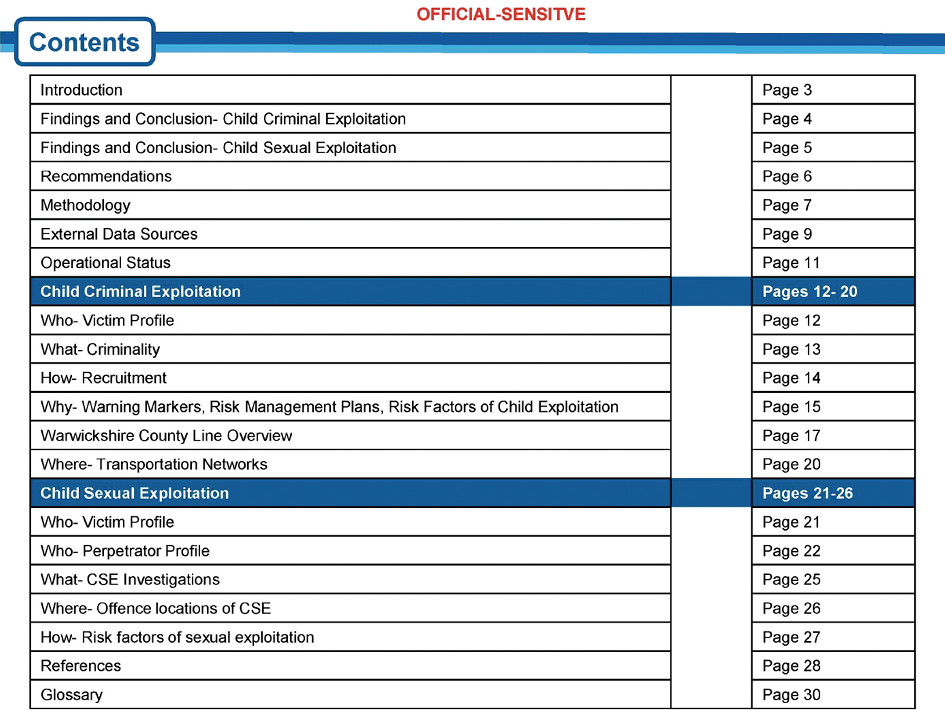H.2: The purpose of problem profiles
3. Problem profiling involves the drawing together of information about child sexual exploitation from different agencies into one place. The purpose of a problem profile should be to enable agencies to fully understand the nature and extent of the problem of sexual exploitation and to commission services, train staff and prioritise action based on an accurate picture.

Warwickshire Police child exploitation problem profile
4. The Children’s Commissioner’s 2013 report made clear that a problem profile should include:
- data about how many children and young people have been sexually exploited and how many are suspected of harmful sexual behaviour with their peers;
- intelligence on businesses and schools of concern (recognising that these are good examples of locations where children may be at risk of sexual exploitation); and
- information on local street gangs and other networks, groups and individuals who present a risk of sexual harm to children and young people.[1]
5. A meaningful child sexual exploitation profile requires accurate data and intelligence. Ms Katherine Riley, Portfolio Director for the Joint Criminal Justice Inspections and Protecting Vulnerable People Portfolio within Her Majesty’s Inspectorate of Constabulary and Fire & Rescue Services (HMICFRS), stated that:
“a proper problem profile … needs to be symbiotic, drawing information in from the partnership information held about a child or, indeed, an offender, and it also needs to be feeding information consistently into that partnership”.[2]
6. The evidence considered in this investigation made clear that the child sexual exploitation profiles in the case study areas were inaccurate in a number of ways.